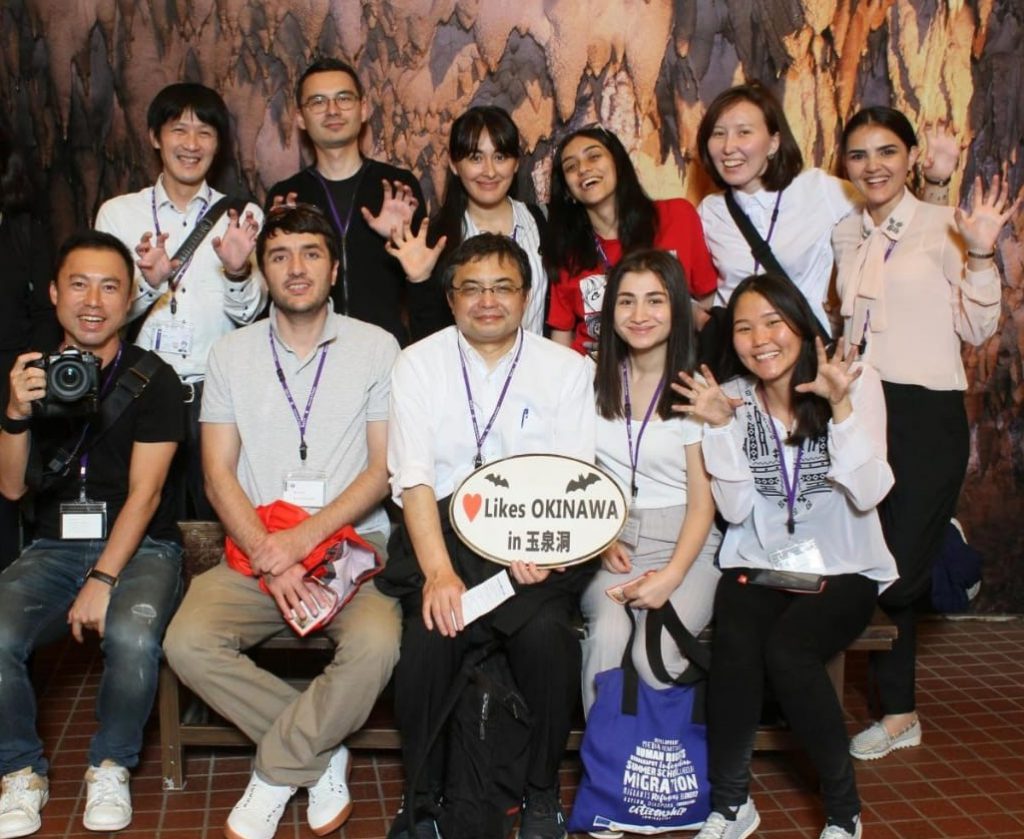Geldiyeva Mivegozel

During our study tour to Okinawa we visited several locations which have a status of remarkable places from historical, cultural and environmental perspectives. Okinawa is notorious for its coral reefs, and significance of beautiful coral reefs is not limited only to enriching diversity of life below water: they are also important for the formation of mysterious world of caves. I was amazed by unique nature of this subtropical oceanic climate zone, especially natural treasures of Gyokusendo Cave, one of the largest stalactites caves in Japan impressed me a lot. The scale of this underground city created by nature is incredible. The cave had been formed from limestone grown on a coral reef over 300 000 years ago but was discovered only in 1974.



Gyokusendo Cave is located in the Okinawa World, a theme park about Okinawan culture. It is the second longest cave in Japan with a total length of three miles. Despite the fact that only 890 meters of this long cave is open for visitors, it was enough for me to witness a beauty of this underground world made of stone of water. Immediately at the entrance of the cave we stepped on a comfortable path which led us downwards through the gallery to the hall with stunning stalactites and stalagmites of various size and shapes. The biggest hall of the cave is larger in comparison to the main pavilion of Shuri Castle. According to different estimates, the total number of stalactites in Gyokusendo Cave is over one million. There are about 30 types of stalactites in the cave and some of them are huge. For example, one of the most interesting stalactite shapes in the cave is called ‘The Bell of the Rising Dragon’ while others may look as stone curtains. A remarkable ceiling of the cave is another special part of the cave because it seems that closely packed multi-ton stalactite spears are about to fall down. The height of galleries and halls coupled with numerous stalactites in the Gyokusendo Cave created an impression of entering a “stone forest”. It is also notable that there is an elevator in the exit from the cave, although it is quite difficult task to maintain its operation under conditions of high humidity around 80 per cent.
Our journey through the cave was full of other highlights as illuminated blue fountains, small ponds and fish swimming in it. Illumination of Gyokusendo Cave are placed in order to enhance natural beauty of this place. In addition, petrified remains of different ancient fish on the walls make exploration of caves a perfect place for study tours. Moreover, it helps to have a better understanding in the evolution of biosphere.
There is a plenty of stalactites caves all over the world, including caves in a mountainous corner of my home country Turkmenistan. After visiting Gyokusendo Cave I got interested whether caves in my country are that developed as in Japan in terms of tourism. Thus, I did a small research about the level of development of touristic activities in similar caves of Turkmenistan. In general, there is dozen of large caves in Turkmenistan. I have found that in the area of the village of Garlyk near Koytendag mountains there are many caves and picturesque holes that are suitable for tourism and they meet all the requirements for safety and accessibility. These unique caves, particularly, Gapgotan, Gulshirin, Dashyurek, and other karst caves remain the main resource for the tourism industry of Turkmenistan. Many stalactites in these caves have branches and curvatures shaped as “goose paws” – anemolites. In some rooms snow-white gypsum forms formless piles – “icebergs”, and sometimes resembling animals – dinosaurs, elephants, birds. Gapgotan cave is the longest numerous karst cavities of Koytendag, it is over 50 kilometers long what makes it one of the longest cave systems in the world. The floor of some halls and galleries seems to be lined with stone flowers. In the cave there are fresh water springs and small ponds with different inhabitants. This cave is most suitable for visiting by tourists. Nowadays all the caves of Koytendag mountains are part of the State Koytendag Reserve.
All these factors attract increased attention of scientists, but at the same time, it is also a sufficient reason for organizing international tourism here, creating a national park, as one of the most amazing places on the planet. There is no doubt that in future Koytendag will become available to a huge number of people who want to see and capture the unique beauty of the underground kingdom of crystals. Definitely, it will be a quite challenging activities for a fragile environment of the caves. In this sense my visit to Gyokusendo Cave in Okinawa is priceless as I had an opportunity to gain knowledge about implementation of sustainable tourism policy in Japan and this experience could be applicable to the case of Turkmenistan.





